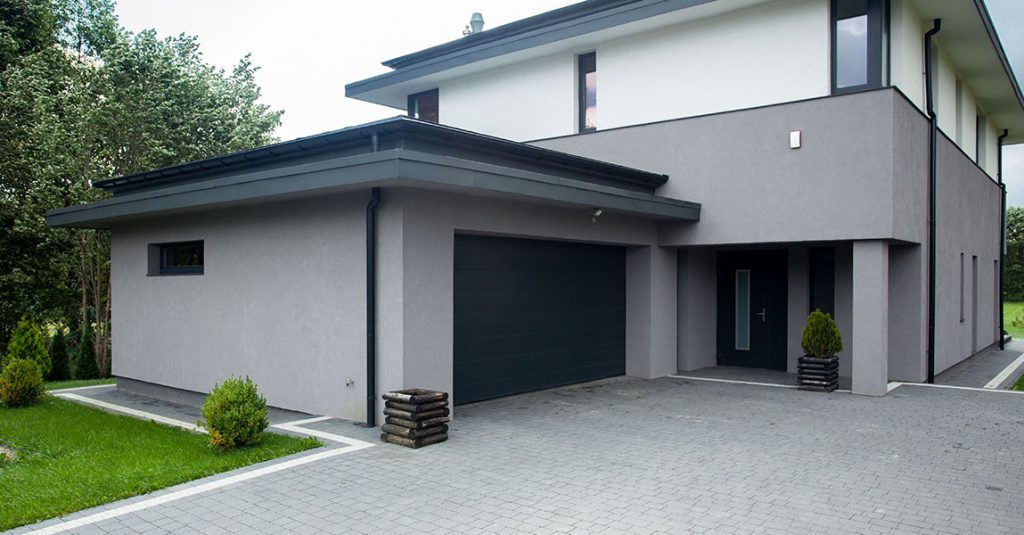Why Winter Garage Door Maintenance Matters in Calgary
Winter in Calgary hits hard and fast. One day we’re enjoying mild fall weather, and the next, everything’s frozen. Therefore, we need to stay ahead of the season, especially when it comes to our garage doors. After all, a faulty garage door can leave us locked out in freezing temperatures or stuck inside when the door won’t open.
To clarify, it’s not just about convenience. A neglected garage door can lead to energy loss, safety risks, and costly repairs. Consequently, doing some routine checks before the deep freeze arrives can make all the difference.
We’re going to walk through the most useful garage door checks you can do this fall. Above all, our goal is to keep your door functioning safely and smoothly all winter long.
Inspect the Weather Stripping and Seal the Gaps
Firstly, start with the weather stripping. This is the soft rubber or vinyl material at the bottom and sides of the garage door. In other words, it’s the barrier that keeps cold air, water, and critters out. However, over time, this seal hardens or cracks due to age and sunlight.
To check it, close the door and look for daylight around the edges. If you see any light peeking through, cold air will follow. Moreover, feel along the bottom edge to see if the strip is brittle or missing chunks. If it is, it’s time to replace it.
Likewise, check the seal along the frame. Damaged or flattened side seals also need attention. A fresh seal not only improves insulation but also prevents unwanted moisture buildup inside your garage.
Test the Balance and Alignment of the Door
A misaligned garage door doesn’t just make noise. It puts extra strain on your opener, springs, and tracks. As a result, small alignment problems can turn into big repair bills fast.
Here’s how to check the balance. Disconnect the automatic opener and try lifting the door halfway. If it stays in place, your springs are balanced. If it falls or shoots up, the tension is off. In that case, the springs might need professional adjustment.
Similarly, look at the tracks. They should be perfectly vertical and flush with the door rollers. If they’re bent or tilted, this will create resistance, especially in cold weather when metal parts stiffen up.
To prevent further issues, learn more about proper garage door spring repair. These components are sensitive and under high tension, so we always recommend getting expert help with adjustments.
Lubricate All Moving Parts with Cold-Weather Grease
Garage doors have a lot of moving metal parts, rollers, hinges, springs, and chains. During winter, these parts are more likely to seize up. Therefore, lubrication is one of the most important things we can do to keep them working.
Use a lithium-based grease or a silicone spray that’s rated for cold weather. In addition, avoid using standard oil-based lubricants because they get gummy when it’s cold.
Start by cleaning off old grease and dirt with a rag. After that, apply a small amount to the rollers, hinges, and tracks. Be sure to move the door up and down a few times to work the lubricant into the joints.
For chain-driven openers, apply a bit of grease to the chain itself. To clarify, do not grease the belt if you have a belt-driven opener. It doesn’t need it and can actually slip if over-lubricated.
Examine the Garage Door Opener Settings and Battery
Meanwhile, the opener itself deserves attention. Cold weather affects the opener’s sensitivity and motor strength. That is to say, the same opener that works in summer might strain during winter.
To check, open and close the door while watching for signs of hesitation or stuttering. If the door stalls or reverses midway, the force settings may need adjustment. Most modern openers have a dial or screw setting to control this. However, refer to your model’s manual for the correct procedure.
Also, don’t forget the backup battery. During a power outage, this battery keeps your opener functioning. It’s usually inside the opener unit or mounted nearby. Press the test button if available, and replace the battery if it’s over two years old or if the test fails.
You can read about the steps to safe garage door opener installation if you’re planning to upgrade your system before winter.
Tighten Loose Bolts and Inspect Hardware
Temperature changes cause metal to expand and contract. Consequently, screws and bolts that were tight in the summer may now be loose.
We recommend going over the entire door frame with a socket wrench. Pay special attention to the brackets, hinges, and roller mounts. If any bolts are wiggling or coming loose, tighten them gently—do not overtighten, as this can strip the threads.
Likewise, look for worn or bent metal parts. If a hinge is cracked or a roller is off-center, replace it before the issue gets worse. Above all, make sure nothing is rubbing or grinding. That’s usually a sign of misalignment or lack of lubrication.
Test the Auto-Reverse Safety Feature
This safety check is simple but critical. The auto-reverse function is designed to prevent injury or damage if the door comes down on an object or person. However, in the cold, the sensors and logic board may be slower or less responsive.
To test it, place a roll of paper towels or a piece of wood under the door. Then, close the door using the opener. The door should touch the object and immediately reverse. If it doesn’t, this feature may need adjustment or servicing.
In addition, check the photo-eye sensors near the floor on each side of the door. Wipe the lenses clean and confirm they’re aligned. Even a slight misalignment can disable the auto-reverse system.
If you’re unsure, reach out to experts in garage door repair in Calgary for an assessment before the cold takes over.
Clean the Tracks and Remove Debris
Over time, the tracks accumulate dirt, leaves, and sometimes even ice. So, one overlooked winter prep task is to clean these tracks thoroughly.
Use a stiff brush and a vacuum to remove debris. After that, wipe the inside of the tracks with a cloth. Do not use lubricant on the tracks themselves. It might attract dirt and create more buildup.
While cleaning, inspect the track for rust or dents. If anything looks out of place, it’s best to address it now. Cold temperatures only make existing damage worse.
Evaluate the Door Panels and Insulation
Lastly, take a good look at the door itself. Check the panels for warping, cracking, or moisture damage. During winter, these issues can expand, leading to air leaks or reduced structural strength.
If your door is insulated, check the interior panels for signs of separation or water stains. Likewise, if it’s a metal door, look for rust spots, especially along the bottom edge.
To keep energy bills down, consider adding foam or reflective insulation to uninsulated doors. Even a basic insulation kit can make a noticeable difference in keeping the garage warmer.
Call Us Before the Cold Makes Things Worse
If any of these checks reveal problems, it’s better to fix them before Calgary’s harsh winter sets in. We’re always ready to assist with urgent repairs, upgrades, or diagnostics. Our team knows how quickly garage door issues can snowball in freezing conditions.
To reach us directly, please use this link to Contact Us. We’ll schedule a visit and make sure your door is ready for the season ahead.
FAQs
How do I know if my garage door springs are worn out?
Garage door springs may be worn if the door feels heavy or doesn’t stay up on its own. If you hear loud snapping or notice gaps in the spring, it’s time to replace them.
Can I replace weather stripping myself?
Yes, you can replace the bottom and side weather stripping yourself using common tools. Just be sure to choose weather-resistant materials suited for cold climates.
What kind of lubricant is best for winter garage door maintenance?
Use a lithium-based or silicone spray lubricant designed for cold temperatures. Avoid oil-based products because they thicken and cause issues in the cold.
Why does my garage door opener struggle in winter?
Cold temperatures can affect the motor, battery, and lubricant. Opener settings may need adjustment to handle the extra resistance caused by stiff parts.
How often should I do these routine checks?
We recommend doing a full garage door inspection at least twice a year—once before winter and once in early spring. This keeps the system in good condition year-round.











